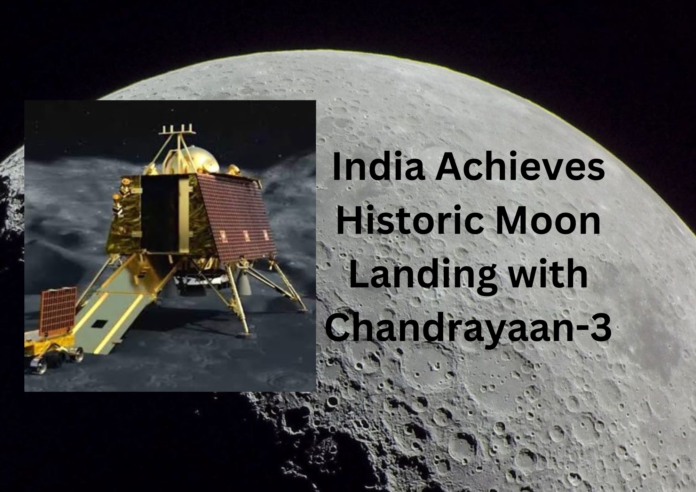In a landmark achievement, India has carved its name into the annals of space exploration by successfully executing a soft landing on the lunar surface’s hitherto uncharted territory, the South Pole. The culmination of the Chandrayaan-3 mission marked a momentous occasion for the nation, with Prime Minister Narendra Modi extending his heartfelt congratulations to the citizens and the dedicated team of space scientists at the Indian Space Research Organisation (ISRO).
The history-making event was not without its challenges, especially during the nerve-wracking final minutes of the mission. These minutes, often referred to as the “20 or 17 minutes of terror,” proved to be the make-or-break phase, where the Vikram lander had to autonomously navigate, ignite its engines at precise moments, and gently touch down on the lunar surface. This cautionary approach stemmed from the setback experienced during India’s second lunar mission, Chandrayaan-2, when the Vikram lander’s landing attempt failed at the final moment.
The crucial phase began approximately 20 minutes before landing when ISRO initiated the Automatic Landing Sequence (ALS). This process empowered the Vikram lander with the capability to independently identify a suitable landing site, calculate the precise coordinates, and execute a soft landing with the aid of its onboard computers and logic.
Chandrayaan-3’s triumphant touchdown on the Moon on August 23, 2023, at 6.04 PM IST was the culmination of a 40-day journey that commenced at the Sathish Dhawan Space Center in Sriharikota. During this period, the Vikram lander relied solely on its internal systems to ensure a safe landing. Mission controllers at ISRO’s ISTRAC closely monitored the progress, but it was the onboard systems of the lander that bore the weight of responsibility during this pivotal phase.
The Chandrayaan-3 mission serves as a poignant sequel to the Chandrayaan-2 mission of 2019, which faced the challenges of lunar surface interaction. The primary goal of Chandrayaan-3 was clear: to demonstrate ISRO’s capability to achieve a soft lunar landing—a feat accomplished by only a select few nations, including the United States, the Soviet Union, and China.
Chandrayaan-2 was a complex endeavor that marked a significant technological leap for ISRO. It comprised an Orbiter, Lander, and Rover, all working in unison to explore the enigmatic South Pole of the Moon. The mission’s objectives encompassed a comprehensive study of lunar topography, seismography, mineral composition, surface chemistry, thermal characteristics of the lunar soil, and the composition of the lunar atmosphere. The results of these studies promise to deepen our understanding of the Moon’s origins and evolutionary processes.
In achieving this historic milestone, India has taken a giant leap forward in the field of space exploration. The successful landing of Chandrayaan-3 represents not only a testament to India’s burgeoning capabilities in space technology but also a moment of pride for the entire world. As we look to the future, it is inevitable that the legacy of Chandrayaan-3 will inspire further scientific exploration and innovation, propelling humanity’s quest to unravel the mysteries of the cosmos.





